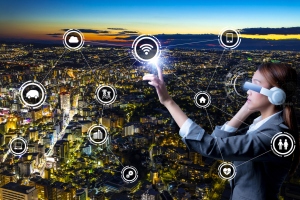That’s another fine mesh you’ve got me into: Part 1

CIOs developing IoT strategies might take note of a particular section of Gartner’s Top 10 Strategic Technology Trends of 2018, says Clare Grant, general manager at Red Hat Mobile, where it describes the emergence of the intelligent digital mesh:“Gartner calls the entwining of people, devices, content and services the intelligent digital mesh. It’s enabled by digital models, business platforms, and a rich, intelligent set of services to support digital business.”
This is where IoT, analytics, edge computing and AI can be combined to deliver information so that organisations can offer a more immersive experience.
The combination of IoT, analytics and AI and, I would argue, mobile, can impact application development, integration and management by fuelling the need for apps to be developed and deployed for traditional, mobile and stateless environments.
CIOs should plan for maintaining core systems in the most cost-effective way, while constantly updating, securing and scaling apps, so that their organisations can respond quickly and flexibly to user and market demands.
So how can they manage change with finite resources? And how can they extend existing applications to mobile and other digital use cases?
Modern app development
Rather than being directed solely by internal IT departments, software development has shifted towards a more user-centric model, with demand for features and services often being driven by users engaging through multiple digital channels.
Today, software should be developed faster, updated more frequently and be able to integrate with multiple business functions and engagement channels, including mobile, messaging, the web and social media.
The industry has figured out how to connect back-end systems with mobile apps, now organisations should also interface with connected devices, analytics and AI apps.
Organisations that can deliver apps that quickly respond to changing conditions across multiple engagement channels can gain an advantage over those that are stuck in lengthy review cycles and tied to inflexible architectures.
In its Top 10 Strategic Technology Trends of 2018, Gartner has included:
- AI foundation
- Intelligent apps and analytics
- Intelligent things
- Digital twins
- Cloud to the edge
- Conversational platforms
- Immersive experiences
- Blockchain
- Event-driven
- Continuous adaptive risk and trust
Build on successes
While ‘the intelligent digital mesh’ may conjure images from a sci-fi movie, AI and IoT technologies ultimately provide either new apps or extend the functionality of existing apps.

Clare Grant
CIOs working with limited budgets and tighter timeframes should avoid reinventing the wheel and re-use existing models and infrastructure where possible. Many of the issues that surface with the integration of AI and IoT are similar to those faced and solved by mobile app developers when enterprise mobility was in its infancy.
Some organisations have become more strategic in their approach, no longer treating mobile as a separate project but seeing it as a broader part of their enterprise application landscape and their digital transformation strategy. I believe the integration of AI and IoT is likely to follow the same path to maturity.
Working with the open source community can also aid in IoT and AI app experimentation. The community can work together to solve common issues. Organisations can then select productised enterprise-ready versions of community-developed innovations that are built for scale.
The author of this blog is Clare Grant, general manager at Red Hat Mobile
Comment on this article below or via Twitter @IoTGN
